Majestic Sibelius makes electrifying finish to Apollo Orchestra’s season
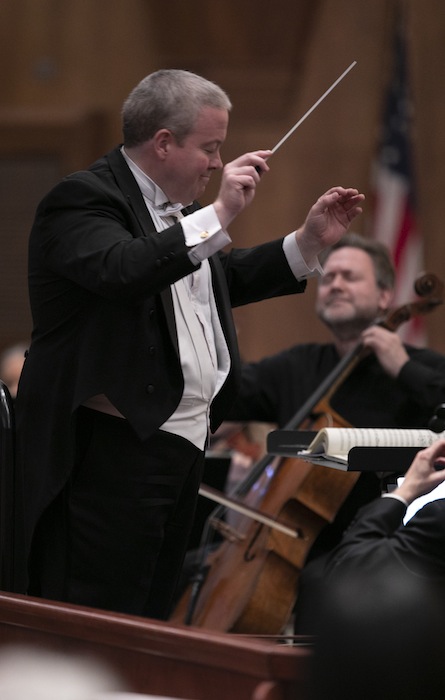
Stephen Czarkowski conducted the Apollo Orchestra Friday night with Steven Honigsberg as soloist in Elgar’s Cello Concerto. Photo: Bruce V. Boyajian
The Apollo Orchestra has an unorthodox business model. Made up largely of young professional musicians, the group presents concerts free of charge in smaller venues around the Washington area. The ensemble closed its eighth season Friday night, with an enjoyable concert hosted by the Church of the Little Flower in Bethesda.
Principal flutist Ardyth Scott’s silvery low range suited the opening of Debussy’s Prélude à l’après-midi d’un faune, wreathed in a soft perfume of delicate horns, woodwinds, and two harps. Assistant conductor (and first violinist) Jeffry Newberger guided the orchestra ably, with no baton, and both hands often simultaneously beating time. The relatively small number of string players produced a rarefied blend in the church’s small sanctuary.
The National Symphony Orchestra, under conductor laureate Christoph Eschenbach, is featuring three of its principal musicians in concertos this month. Steven Honigberg, a member of the NSO’s cello section, did the same with this orchestra, taking the solo part in Elgar’s Cello Concerto.
The highlight of his performance of this autumnal work was the third movement. The ardent tone of Honigberg’s cello was surrounded by mostly lush strings, with conductor Stephen Czarkowski affording his soloist plenty of room to breathe with ample rubato.
In other sections, Honigberg occasionally struggled with intonation, as when his line swept up the A string dramatically in the first movement. The orchestra, led with care by Czarkowski, had most of the best moments, including the menacing low brass in the finale. In the slow introduction of the second movement, a sort of accompanied cadenza, Honigberg shone brightest.
The highlight of the evening was an expansive, surprisingly dramatic reading of Sibelius’s Fifth Symphony, right from the tight, balanced opening in the brass and woodwinds. Czarkowski’s hand was strongest here as he guided the musicians to building molten sonic blocks of sound at the climaxes. The most exciting amassing of sound, in the first movement, crashed like a surging wave with the trumpets gleaming on top.
Czarkowski also paced the extensive accelerando at the end of this movement for maximum energy. The strings became a little ragged along the way, but it made for a genuinely electrifying finish. A gentle tempo in the second movement allowed for careful drawing out of the sometimes clashing dissonances, yearning retardations suspended and resolved upward. The orchestra skillfully delineated the many layers of sound built up by Sibelius in this pastoral movement, with just a hint of distant thunder.
Sibelius attributed the now famous theme of the third and last movement to the calls of swans as they took flight. The horns introduced this memorable theme regally, soaring and solid in tone, which was then taken up in various ways by the other sections. The strings again struggled in the muted section where they had the theme, but the effect of this movement as a whole was thrilling. The tense conclusion–in the 1919 revised version–was a series of crisply attacked, perfectly unified chords.
The Apollo Orchestra opens its ninth season 7:30 p.m. October 12 with violinist Cho Liang Lin at the Church of the Little Flower. apolloorchestra.com
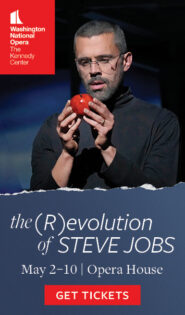
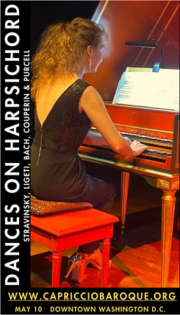
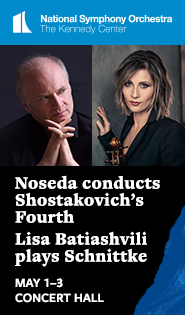
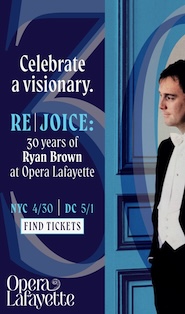
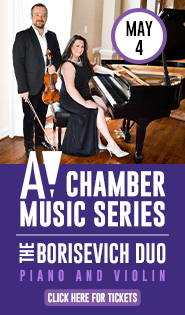
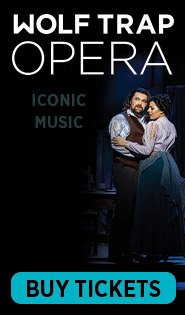
Posted Jun 10, 2018 at 10:42 am by Joan Pezzuti
Bravo Wonderful I am very pleased with your work—Love Joan
Posted Jun 10, 2018 at 10:50 am by Patti Snyder
This is a wonderful review. Thank you. I have never met Stephan, but have followed him through his parents and a very long friendship of 45 years. I hope one day to hear him in person. Well done.
Posted Jun 27, 2018 at 6:33 am by Phoebe and Philip Devenish
Wonderful review – congratulations. Monteux School off to a wonderful start as well. We miss you. Keep up the good work! P-2